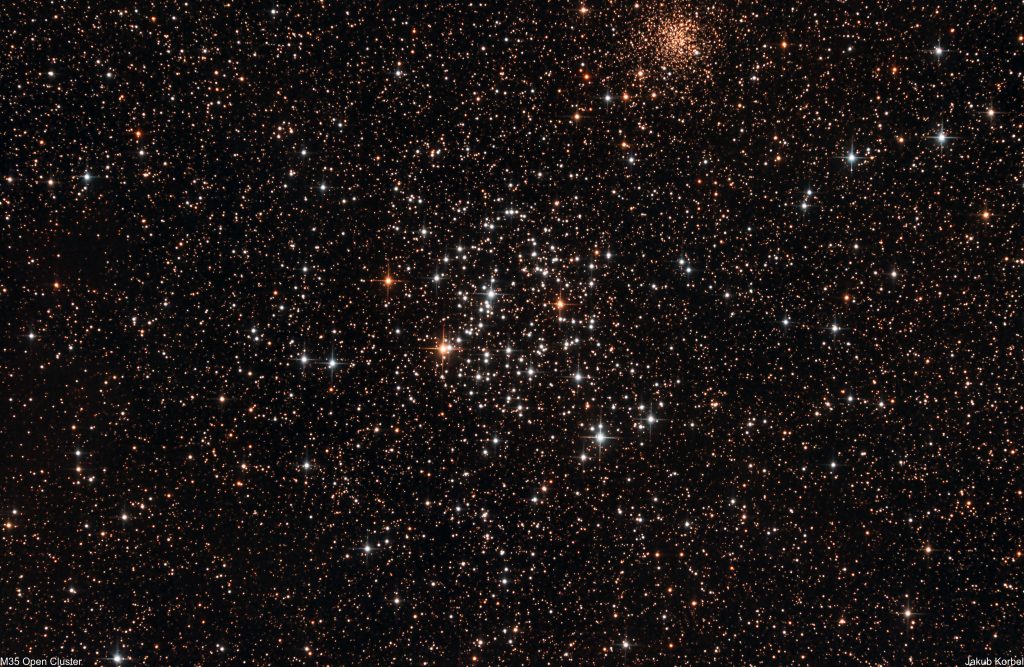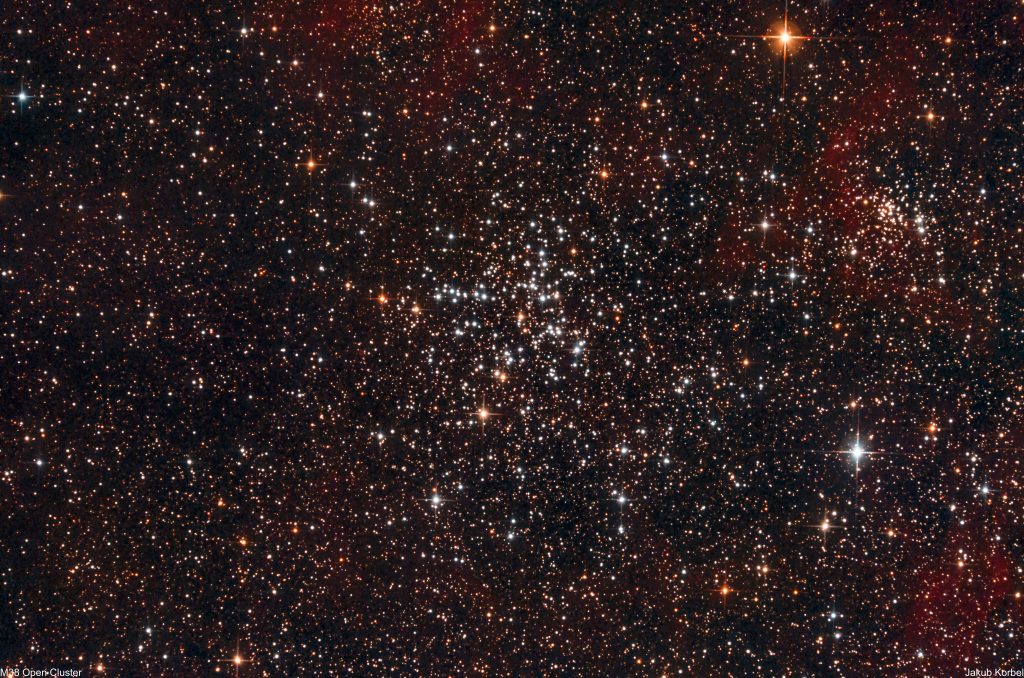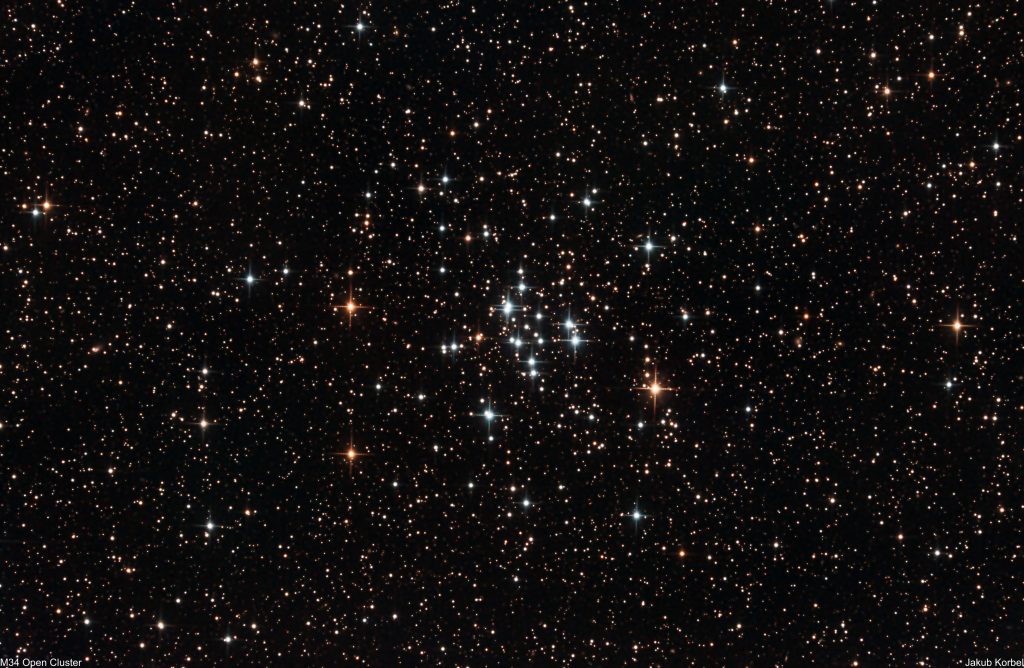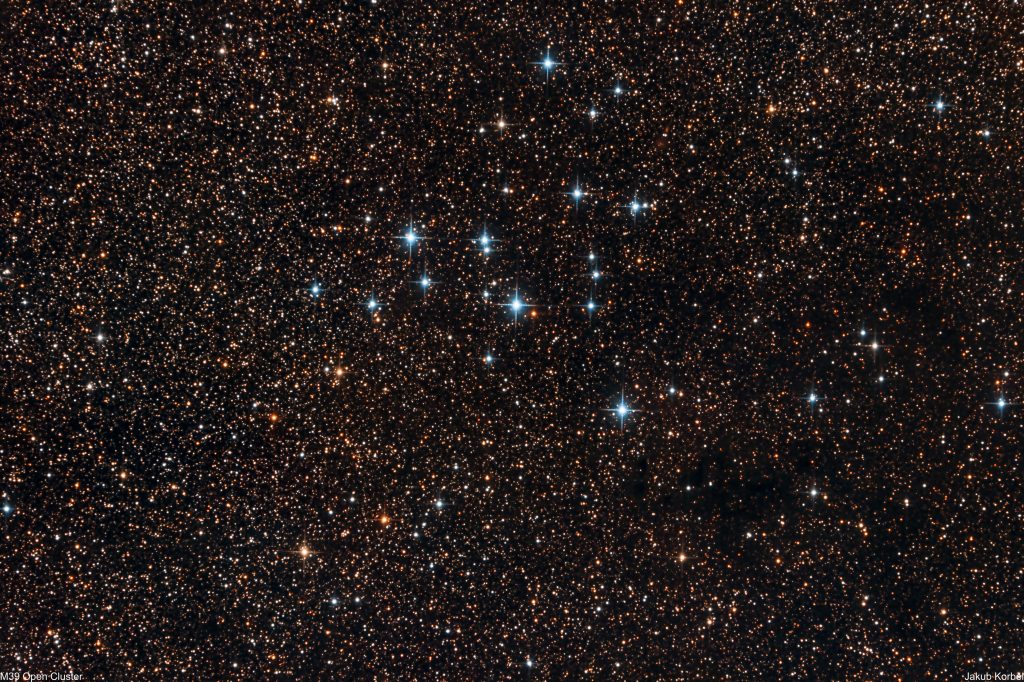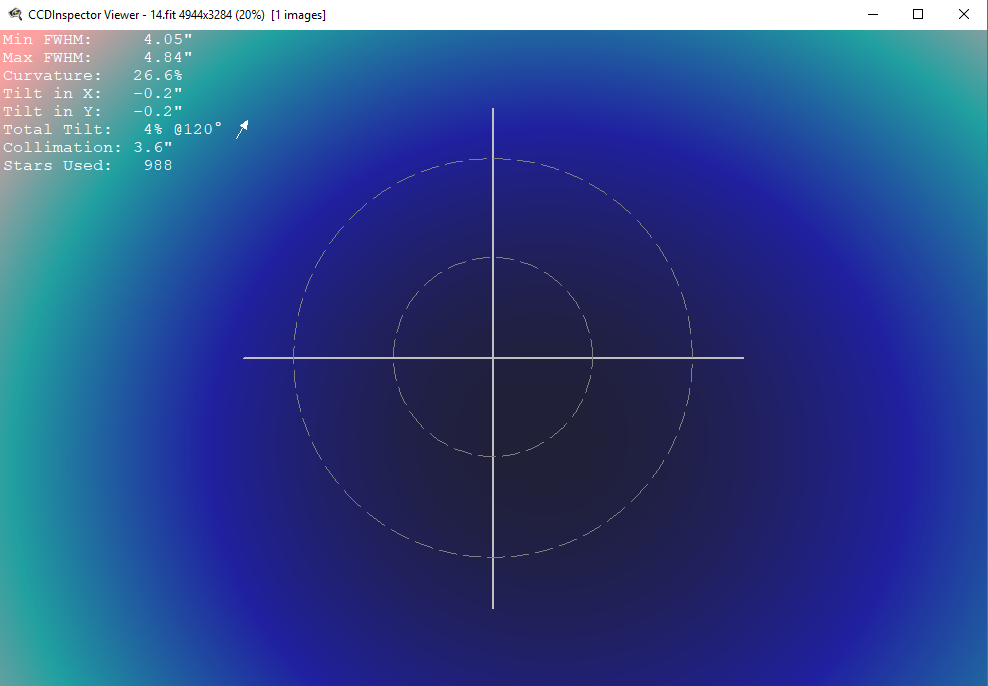Messier 35 an open cluster located in constellation Gemini. The cluster is approximately 2800 light-year far from Earth and it contains roughly 200 stars.
Second open cluster NGC 2158 is located in the background (upper right part of the picture). I didn’t know that there is another cluster in field of view. If I would know it, I would change the composition of the picture.
This cluster was the last one out of four captured during single night. In the early morning I slewed to M35 and went to sleep. The camera captured 56 exposures, 3 minutes each, before the dawn arrived. This means nearly 3 hours of total exposure time.
Technical details:
| Telescope | Newton 254/1000 mm |
| Aperture | 254 mm |
| Focal length | 1000 mm |
| Mount | Gemini G53f |
| Autoguiding | ZWO 174MM, TS 60/240 mm |
| Camera | ZWO 071 Pro @-20°C |
| Corrector | TS-Optics 2" 3-element MaxField |
| Filters | Hutech IDAS LPS-D2 |
| Exposure | 56x180s, Gain 94, bin 1x1, |
| Date | 2018-11-18 |

